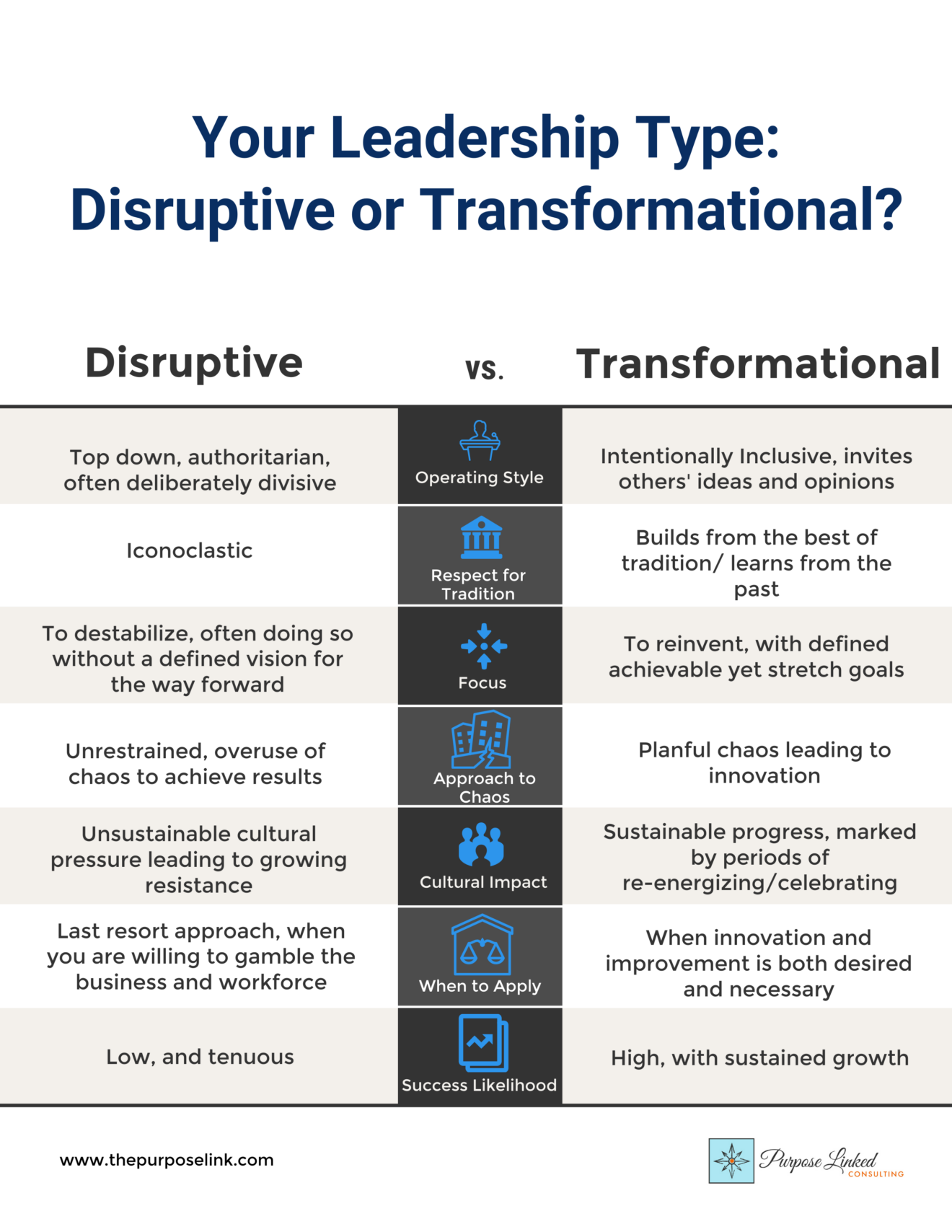There are times in every business and with every team where change becomes an imperative for growth and sustainability. In many cases, these moments don’t occur as a single event that marks the need for change, but rather as an unfolding series of factors that signal to leaders that, absent significant evolution, the organization or the team will likely become irrelevant.
While disruptors have shaped a number of markets, such as Amazon’s impact on the retail space and Twitter’s remaking of the news and social networking industries, it’s important to distinguish disrupting a market from operating as a disruptive leader. They are wholly different.
Companies that have been market disruptors have leaders that have bounded ahead and envisioned opportunities before their competitors were able to do so, basically reshaping the market landscape before others were aware that it was happening. This is the type of disruption that can catapult a company from success to significance, and it requires transformational thinking from company leadership.
When individuals operate as disruptive rather than transformational leaders, it’s a significantly dissimilar decision from choosing to act as a market disruptor. It’s a choice that influences a leader’s operating style, their relationship with tradition, how they focus to implement change, their use of and comfort with chaos, the effect their behaviors have on the organization’s culture, and their chances of sustained success.
Take a look at the following table, which describes the characteristic differences between disruptive and transformational leaders. Consider your own leadership approach and where it sits on the continuum between the two.
Between these two leadership types, most effective are the characteristics that influence the organization’s culture, which is a prime lever for driving change in the business. Transformational leadership nurtures a culture that embraces change, engages with ambiguity and relinquishes the fear that naturally accompanies change so that the organization can ultimately innovate.
Conversely, while disruptive leaders may achieve change, the casualties of doing so can often be found littered around the organization. They show up as disengaged and disenfranchised employees, high (and undesired) turnover, and unrestrained anger and resistance in the workforce that leads to an eroding of the company brand and the customer experience. If this sounds like your organization, it’s time to take a hard look at how your own leadership style may be a contributing factor.
Is there a proper time to act as a disruptive leader? Perhaps, but rarely so, and only when it seems that all other options for driving change have been exhausted. Just be sure that you’re willing to risk everything to achieve your agenda, and that the business, not your own ego, is the prime beneficiary.
Alaina Love is chief operating officer and president of Purpose Linked Consulting and co-author of “The Purpose Linked Organization: How Passionate Leaders Inspire Winning Teams and Great Results” (McGraw-Hill). She is a recovering HR executive, a global speaker and leadership expert, and passionate about everything having to do with, well … passion. Her passion archetypes are Builder, Transformer and Healer. You can learn more about how to grow leaders, build passionate teams and leverage passion to create great customer outcomes here.
When she’s not working with her Fortune 500 client base, Love is busy writing her next book, “Passionality, The Art and Science of Finding Your Passion and Living Your Bliss,” which explores the alignment of personality, purpose and passion, and the science of how it contributes to our well being. Follow Love on Twitter, Facebook, YouTube or her blog.
If you enjoyed this article, join SmartBrief’s e-mail list for our daily newsletter on being a better, smarter leader.
